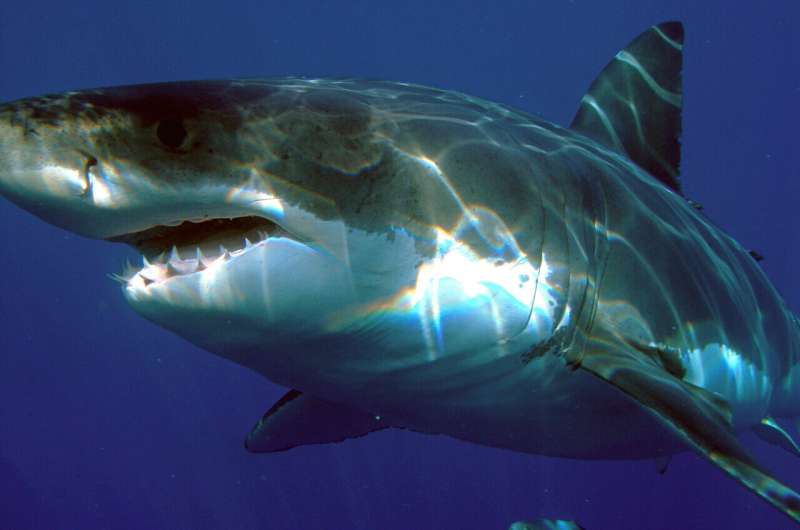Great white shark (Carcharodon carcharias), Isla Guadalupe, Mexico. Credit: public domain
If you’re going to California’s Monterey Bay this summer, you’ll need a bigger boat.
Great white sharks are on the rise in the area, and warming water due to climate change is playing a big role, according to a recently published study from the Monterey Bay Aquarium, which tracked great whites’ migration patterns for two decades.
The massive data, part of the aquarium’s White Shark Research Project, tracked the seasonal travel patterns of 79 young sharks using electronic tags and revealed that the apex predator has not only adapted to the perils of a warming planet, but has also lived in it. thrived.
“These complete metadata sets can provide an enormous amount of useful information for fisheries managers and other scientists,” said John O’Sullivan, director of collections at Monterey Bay Aquarium and lead author of the study.
In 2015, the research took a dramatic turn when significant changes in weather patterns led scientists to a new discovery: A thriving population of young great white sharks grew in their backyard, in the heart of Monterey Bay.
“We started seeing the heat wave after 2014, and that warmer water temperature along the coast opened up a swimming corridor more than 400 miles from Santa Barbara all the way to Monterey Bay,” O’Sullivan said. “It was one of the first examples of how climate change affected marine life in the aquarium.”
And the warming waters near the coast of Santa Cruz brewed the perfect environment for a shark farm.
While many of the shark sightings reported near the bay early in the study were adults returning in the fall and winter to feed on seals and sea otters, O’Sullivan said, later sightings were true. scientists were looking all the time: young people.
Since those juvenile shark sightings in 2015, it appears that the Monterey Bay area has become an ideal home for great whites, who usually prefer the milder waters of the Southern California and Central California coasts.
For more than a century, great whites have faced the dangers of food shortages, burgeoning fishing practices, and illegal trophy hunting and trafficking. Laws regulating and restricting fishing practices have come into effect over the years, but it’s difficult for scientists to pinpoint exactly why or how great white sharks migrated to the Bay Area, O’Sullivan said.
And while the warming waters have been beneficial to great whites in Monterey Bay, the long-term impact of climate change on the shark population is unclear.
“These 20 years of data focused on central Baja and central California. Now that these animals have moved to Monterey Bay, we can’t assume that our historical data set is the same as what these animals will do in the same region,” O Sullivan said.
New study finds climate change is shrinking, shifting range of young white sharks
2022 Los Angeles Times.
Distributed by Tribune Content Agency, LLC.
Quote: Great white sharks thrive in Monterey Bay thanks to warming waters, study shows (2022, Aug 4) retrieved Aug 5, 2022 from https://phys.org/news/2022-08-great-white-sharks-monterey-bay.html
This document is copyrighted. Other than fair dealing for personal study or research, nothing may be reproduced without written permission. The content is provided for informational purposes only.

